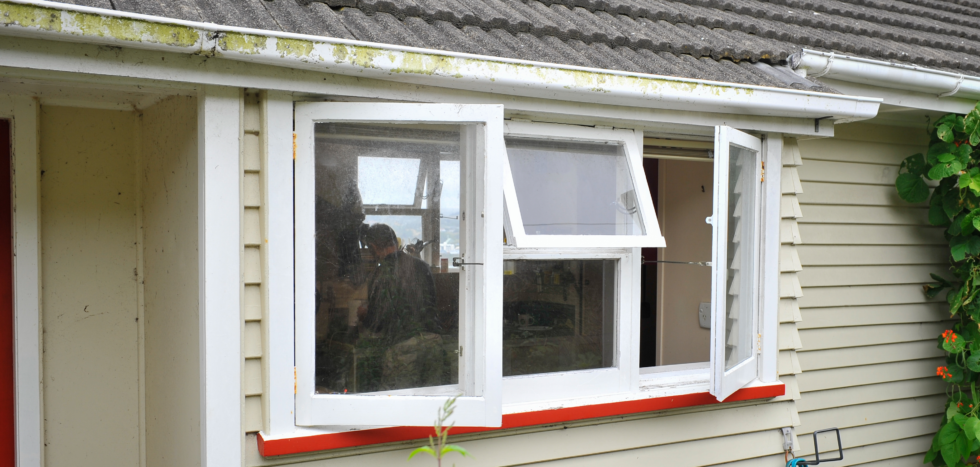
Open windows to reduce Omicron transmission!
26 January 2022
Airborne transmission is the primary transmission pathway for the virus (SARS-CoV-2) that causes COVID-19. Transmission can be reduced through mask use, physical distancing and ventilation of indoor spaces. The New Zealand Indoor Air Quality Research Centre (IAQRC) have conducted modelling and assessed ventilation rates in a variety of NZ buildings, which has led to advice for the NZ Government on ventilation and air cleaning practises to reduce the transmission risk of COVID-19. Given the recent occurrence of community transmission of the Omicron variant in NZ, we wish to share some key points.
Ventilation of an indoor space with fresh outdoor air is an effective way of reducing the concentration of airborne particles. Effective ventilation can remove and dilute airborne particles that contain the virus that causes COVID-19.
In warm weather, many indoor environments can be naturally ventilated by opening doors and windows. For natural ventilation to be most effective, we recommend opening windows and doors as soon as you start using a room. If possible, open a window or a door on different walls of a room to create a cross flow of fresh air. Opening windows or vents at different heights is also effective for boosting the airflow. If the weather is windy, good ventilation can be achieved with the windows open only a small amount, however when there is little wind it is important to open more windows or doors, or open them wider. We recommend keeping windows open for a while after people have finished using the space to flush out stale air.
Some buildings are fitted with mechanical ventilation systems that use fans and air conditioning systems to move the air. There are a lot of variations between how mechanical ventilation is installed and operated, which makes it difficult to compare systems. We recommend that mechanical ventilation is operated at full fresh air intake, from shortly before you need to use it, until an hour after people have left the space. We recommend that mechanical ventilation systems are checked by a qualified engineer to confirm that all components are operating correctly.
Heat pumps in homes and small offices, which have a fan unit outside and another inside, recirculate air but don’t bring in fresh air.
There has been talk in the media of using air cleaners to help remove airborne particles carrying COVID-19. In essence, an air cleaner is a filter that can capture particles as the air is forced through the air cleaner. Most filters can capture large particles such as pollen, however a very fine filter is required to capture virus particles as viruses are very tiny. Unfortunately, very fine filters also make it hard for the air to pass through the filter and bigger fans are needed for this. A downside of using fine filters, is bigger fans can be noisy. Portable air cleaners are best used in poorly ventilated spaces that are occupied for long periods of time. Where there is good natural or mechanical ventilation, portable air cleaners don’t give much additional protection, as the flow of fresh air from the open windows can be much greater than the air flow through the air cleaner.
We do not recommend the use of ionizers, ozone generators or some photocatalytic oxidisers. These work by producing substances which damage the virus; some of these substances are also harmful to human health if present in the air we breathe.
During warmer weather, allowing as much outdoor air inside as possible through open doors and windows, or using ventilation from a well-designed and operated mechanical ventilation system is the best way of ventilating our homes, schools, workplaces and social indoor spaces to reduce the risk of COVID-19 transmission. Members of the IAQRC are exploring effective ventilation strategies to use when the weather is colder.
The IAQRC has no commercial interests in ventilation or air cleaning equipment.
